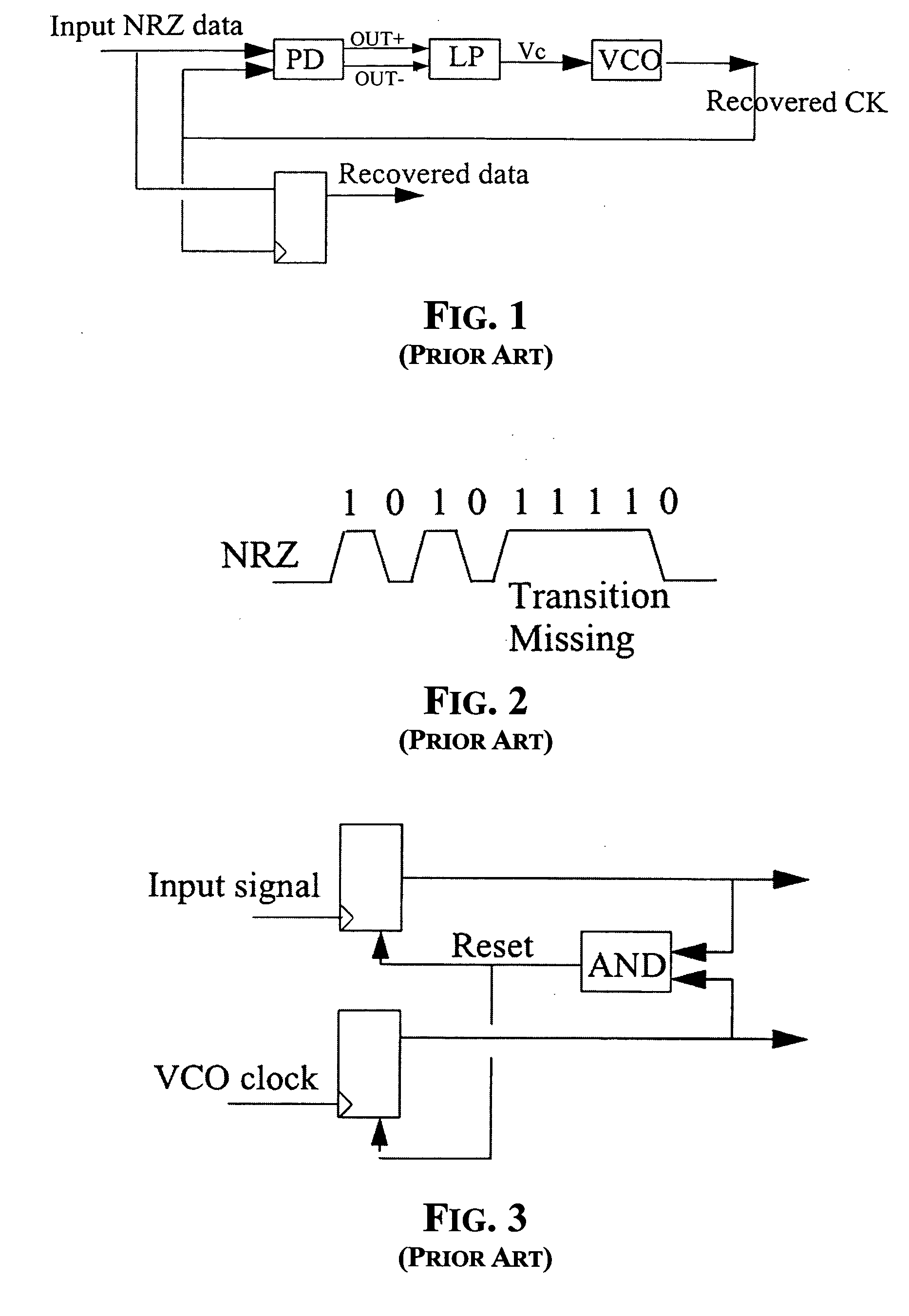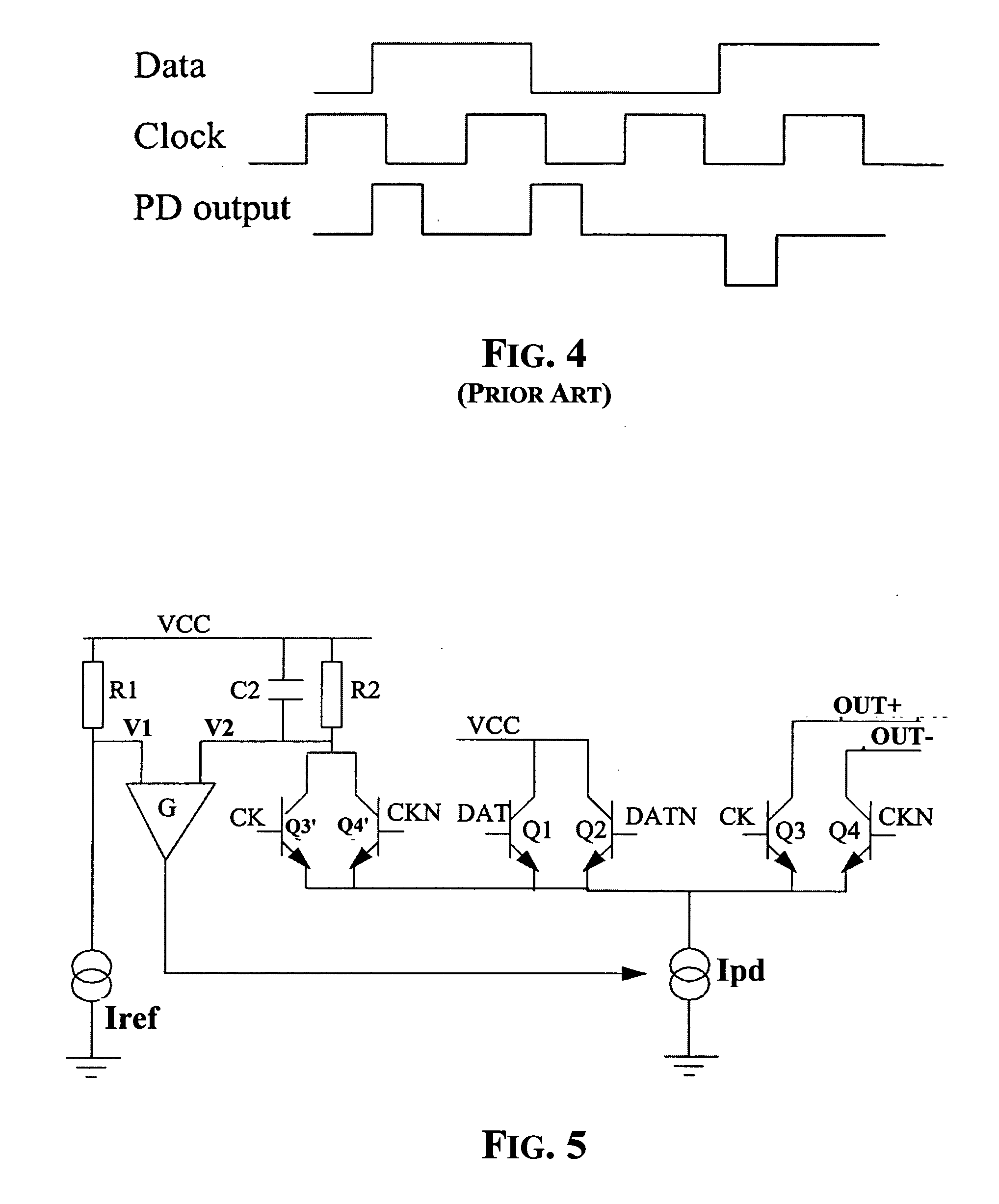Method and circuit for sensing the transition density of a signal and variable gain phase detecting method and device
a phase detection and transition density technology, applied in the field of linear phase detectors, can solve the problems of increasing the probability of erroneous recognition of received bits, data receivers may receive significantly distorted signals, and the frequency of the recovered clock is no longer adjustable by the pll loop, so as to improve the performance of the phase-locked loop (pll) loop
- Summary
- Abstract
- Description
- Claims
- Application Information
AI Technical Summary
Benefits of technology
Problems solved by technology
Method used
Image
Examples
Embodiment Construction
[0027] A sample embodiment of a variable gain linear phase detector of the invention is depicted in FIG. 5. The phase detector is composed of a first differential pair of transistors Q3, Q4 controlled by the clock CK and by its inverted replica CKN for outputting the differential current signal OUT+, OUT−, and a second differential pair of transistors Q1, Q2 controlled by the digital input signal DAT and by its inverted replica DATN. The two differential pairs of transistors Q1, Q2 and Q3, Q4 are biased by a common current generator Ipd. The current from the common current generator Ipd is regulated by a feedback loop to vary the gain of the differential output stage Q3, Q4, according to the invention.
[0028] The regulation loop is implemented by adding a third differential pair of transistors Q3′, Q4′ that may be identical or scaled replicas of the transistors Q3, Q4 of the first (output) differential pair. The third differential pair of transistors Q3′, Q4′ are similarly driven by...
PUM
 Login to View More
Login to View More Abstract
Description
Claims
Application Information
 Login to View More
Login to View More - R&D
- Intellectual Property
- Life Sciences
- Materials
- Tech Scout
- Unparalleled Data Quality
- Higher Quality Content
- 60% Fewer Hallucinations
Browse by: Latest US Patents, China's latest patents, Technical Efficacy Thesaurus, Application Domain, Technology Topic, Popular Technical Reports.
© 2025 PatSnap. All rights reserved.Legal|Privacy policy|Modern Slavery Act Transparency Statement|Sitemap|About US| Contact US: help@patsnap.com



